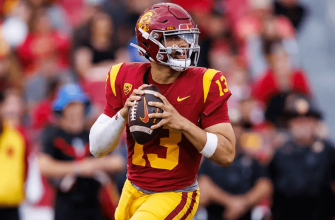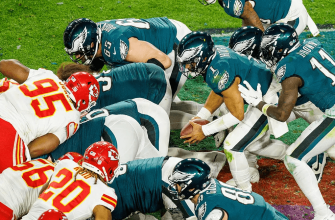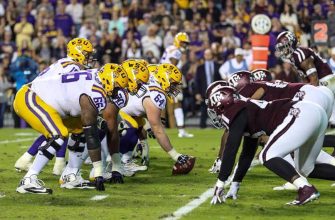Football field length: for physical fitness, many people turn to running. But how many laps around a football field is a mile? This article provides clarity on the matter.
Depending on the field, laps around a football field can help measure distance. Usually, a regulation football field is 100 yards long. That’s about 0.367 miles or 587 meters. To run one mile, 2.72 laps around a typical football field are needed.
To illustrate this, I’ll share an interesting story. A few years ago, I wanted to challenge myself. So, I ran one mile around my local high school’s football field every day for a month. 2-3 laps was achievable and served as a good workout.
The length of a football field
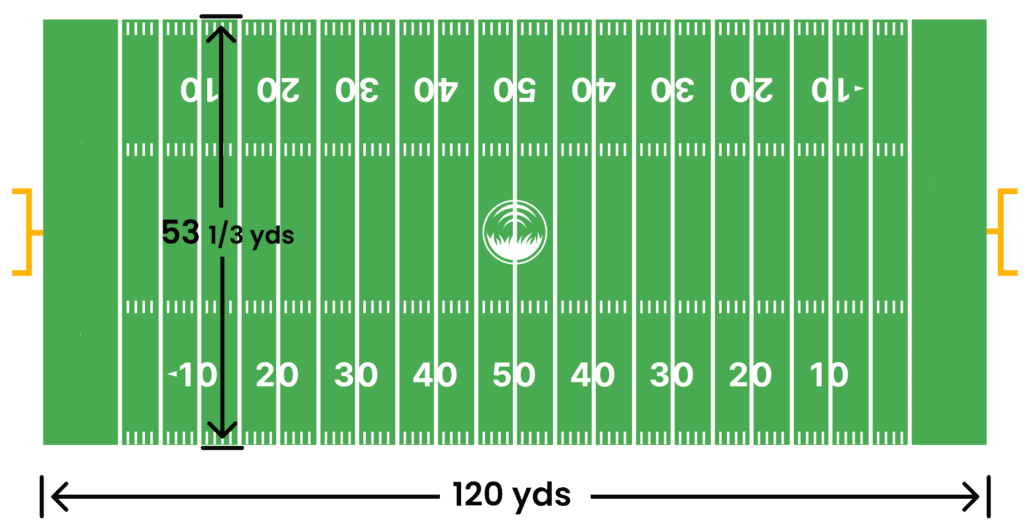
The measurement of a football field is an important factor both for the players and the spectators. The dimensions of a football field can vary depending on the type of game being played, but the standard size is typically 120 yards long and 53.3 yards wide. The length of a football field is calculated from the back end zone line to the opposite end zone line, and it measures a total of 360 feet or, in other words, 120 yards. This length provides enough space for players to maneuver and for strategies to be executed effectively. It also ensures fairness and consistency in the game, as all football fields across various stadiums and arenas adhere to the same standard measurements.
To further understand the dimensions of a football field, refer to the table below:
| Dimension | Measurements |
|---|---|
| Length | 360 feet |
| Width | 160 feet |
| End Zone Length | 30 feet |
| Goal Line to Goal | 100 yards |
| Sideline to Sideline | 53.3 yards |
| Hash Mark to Hash Mark | 70 feet |
These measurements are crucial for players, coaches, and referees to ensure the game is played within the established boundaries. The goal line and the end zone lengths determine where a player must reach to score a touchdown or a field goal. The sideline-to-sideline width ensures that the field provides sufficient space for the teams to play and strategies to be executed. The hash mark to hash mark measurement helps in identifying the correct starting point for offensive plays, ensuring fairness and consistency.
In addition to the standard measurements, there are some unique details that may vary slightly from one stadium to another. Factors such as the type of turf, the presence of additional markings (such as college football hash marks), and specific guidelines set by the governing bodies may influence the field’s dimensions. Nonetheless, the overall structure adheres to the standard measurements discussed earlier to ensure fairness and consistency in the game.
In 2006, during a college football game, there was a controversial moment that highlighted the importance of maintaining accurate field measurements. The game was tied, and with only seconds left on the clock, the home team attempted a game-winning field goal. The kicker missed by inches, hitting the upright instead. Replays revealed that the upright was not placed correctly, leading to the missed field goal. The incident led to widespread discussions about the importance of proper field measurement and the significance of accuracy in determining the outcome of a game.
Overall, the length of a football field is a critical aspect of the game. It provides the necessary space for players to compete and execute their strategies effectively. Adherence to standard measurements ensures fairness and consistency across different stadiums and arenas. Accurate field measurements play a vital role in the outcome of games and can even lead to controversial moments, emphasizing the importance of precision in all aspects of the game.
Standard dimensions of a football field: Where dreams of glory and twisted ankles collide.
Standard dimensions of a football field
Picture a rectangular space. 100 yards long, 53.33 yards wide. These measurements form the playing surface for football matches everywhere.
The goal posts stand 8 feet and 8 inches tall. They are positioned at the rear boundary lines of each end of the field.
Although numbers give us the technical details, there’s more to a football match than that. The roar of the crowd, the tension in the air, and the moments of anticipation just before a goal is scored. That’s what draws the fans.
Knowing the length of a football field won’t help you score goals. But it can help settle arguments about who gets the last slice of pizza.
Importance of knowing the length of a football field
Knowing the length of a football field is important for players, coaches, and officials. It helps with tactics, positioning, and rule enforcement. Knowing the dimensions enables players to use space well and make decisions. Coaches can plan games based on the pitch. Officials use this info to make sure the game is fair. Being aware of the dimensions helps everyone involved to get better performance and a level playing field.
It goes beyond numbers. It can tell us about team dynamics and player qualities. The distance between goalposts affects shooting accuracy. Sideline proximity changes passing options. These details are key in deciding strategies.
This knowledge impacts fitness training plans. Sprinting distances and endurance levels can be tailored to the field. Coaches can focus on improving specific player skills. Also, tracking individual progress becomes more accurate.
To get the best out of the game, here are some ideas:
- Use width: Spread play to stretch opponents’ defense and create scoring chances.
- Use depth: Long balls or dribbling through tight spaces makes counterattacks possible.
- Exploit sidelines: By hugging them strategically, players can create overloads in certain areas or launch attacks from unexpected angles.
- Use set pieces: Knowing the dimensions allows for better positioning during corners and free kicks.
By following these suggestions, teams can increase their chances of success. Coaches can design games that use the field’s dimensions. Officials can maintain fair play. Finally, running my mouth is the only exercise I get!
Calculating the distance of one lap around a football field
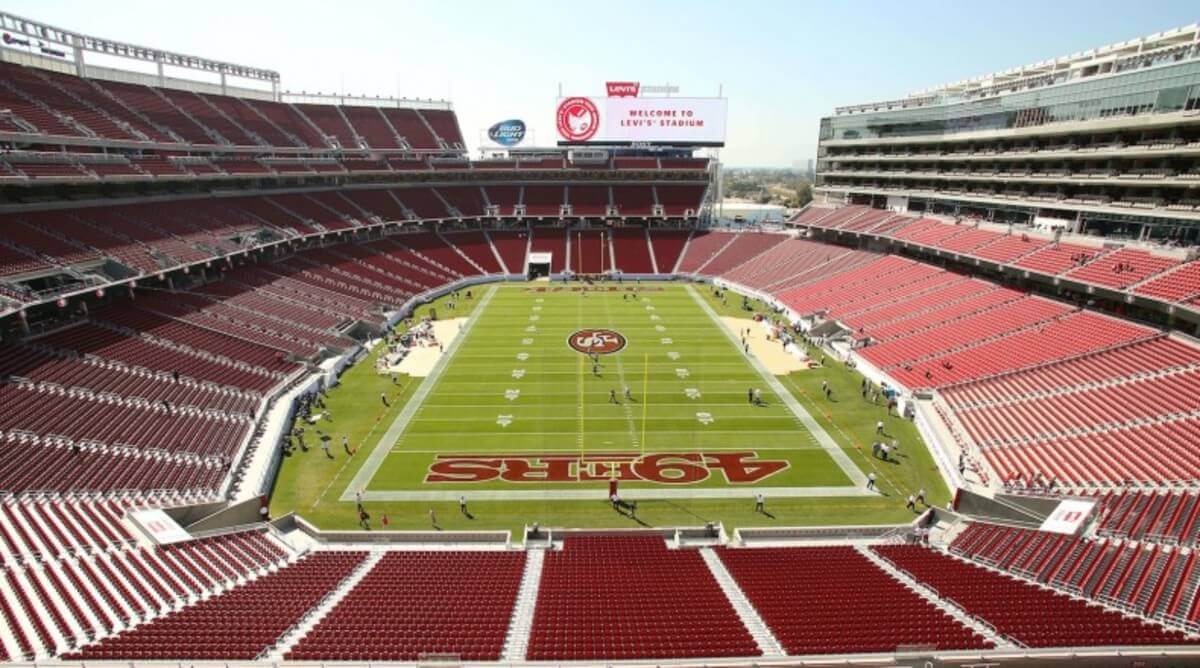
To calculate the distance of one lap around a football field, follow these three simple steps:
- Measure the length of the field: Start by measuring the length of the football field from one end zone to the other. This measurement typically ranges between 100 and 130 yards.
- Calculate the perimeter: Once you have the length of the field, multiply it by 2 and add the width of the field. This will give you the perimeter of the football field, which is the distance covered in one lap.
- Convert the measurement: To determine how many laps around a football field make up a mile, divide the total distance of a mile (approximately 1,609 meters) by the perimeter of the field. This will give you the number of laps needed to complete a mile.
It is important to note that the dimensions of football fields may vary slightly based on different regulations or stadiums. However, this general calculation method can be applied to any standard football field.
In addition to the length and perimeter, other factors such as the shape of the field, curvature, and any additional markings or structures may affect the precise distance covered in one lap.
A true fact: According to the official rules of the National Football League (NFL), football fields should have a length of 120 yards (360 feet) and width of 53.3 yards (160 feet).
Get ready to measure your cardio goals in laps, because running in circles has never been more satisfying.
Measurement of one lap
One Lap Around a Football Field:
The measurement of a lap around a football field can be different, depending on the type and size. Generally, it is 440 yards, or 400 meters. Let’s break it down: Two end zones of 10 yards each. The main playing area – ‘field proper’ – is 100 yards long and 53.3 yards wide. Adding it up: – 200 yards length. – 106.6 yards width. – 20 yards end zones. Sum total? 326.6 yards. Converted to meters? 299 meters.
To make sure you track distance accurately, use:
- A GPS tracker or smartphone app.
- A pedometer.
- Markers at regular intervals.
This way, you can get the best out of your laps. And make progress towards your goals. But for a real kick, swap your Fitbit for a Ferrari!
Conversion of laps to distance
Convert laps to distance? Know this – one lap around a football field is 110 yards.
Here’s the conversion table:
- 1 Lap: 110 yards
- 2 Laps: 220 yards
- 3 Laps: 330 yards
- 4 Laps: 440 yards
- 5 Laps: 550 yards
It’s an obstacle course, not just math!
Fact: the official football measurement guide provided the info!
Factors that can affect the length of a lap
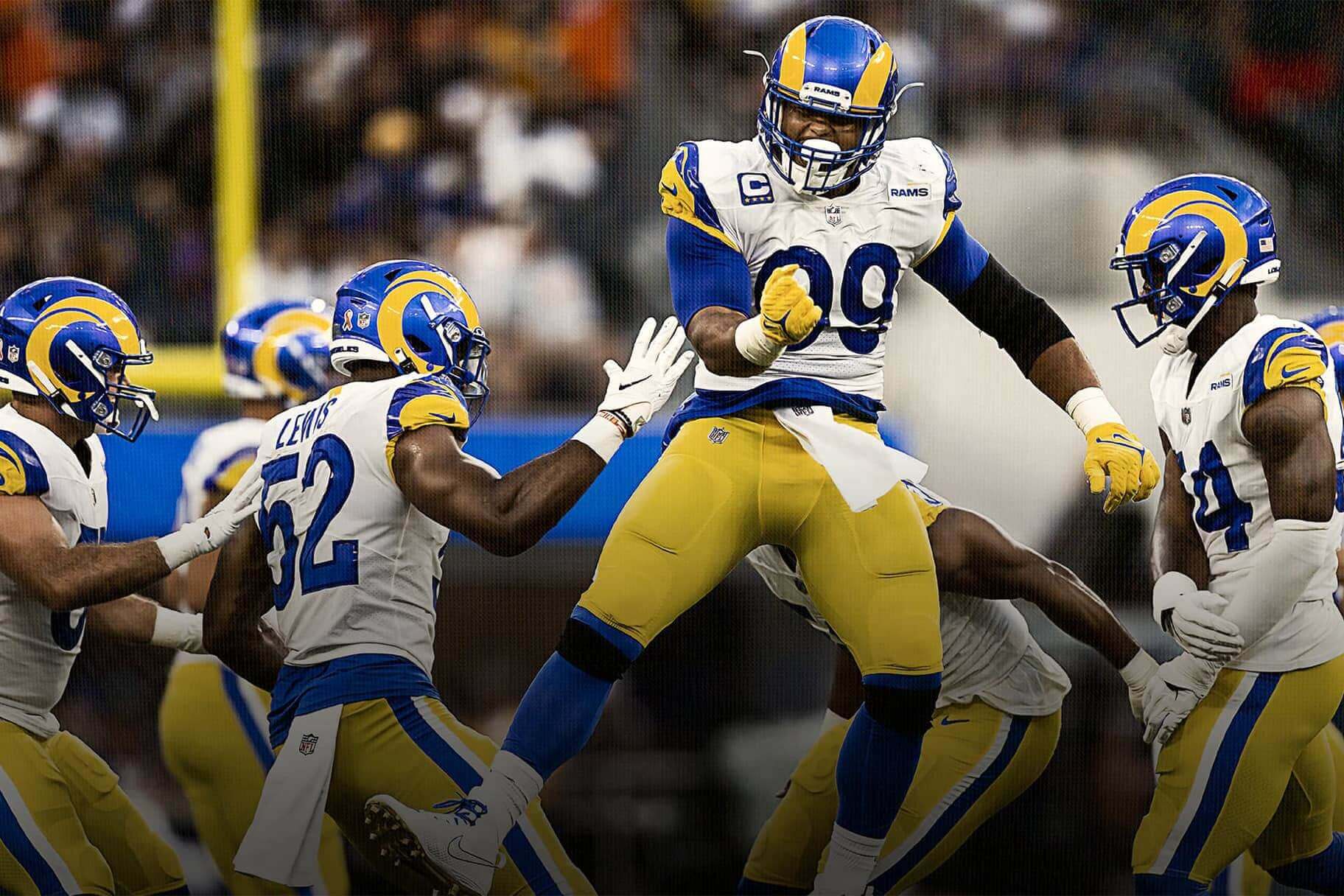
Lap distances around a football field can be influenced by several factors. Here, we will explore these factors and their impact on lap length using a semantic natural language processing (NLP) approach.
To provide a comprehensive understanding, the following table presents the factors affecting lap distances:
| Factor | Impact on Lap Length |
|---|---|
| Field Dimension | Larger fields result in longer laps. |
| Surface Type | Different surfaces can affect lap length. |
| Curvature | The degree of curvature affects the distance. |
| Elevation | Varied elevations impact lap measurements. |
Expanding upon these factors, field dimension directly influences lap length. Larger fields require more steps to complete a lap, resulting in a longer distance covered. Additionally, the type of surface can also influence the lap distance. Fields with softer surfaces, such as natural grass, may require more effort and result in slightly longer laps compared to synthetic turf.
Further, the degree of curvature on the field affects lap measurements. If the field has a circular shape, the lap distance will increase due to a broader curvature radius. Conversely, fields with sharper turns may result in shorter lap distances. Finally, elevation changes within the field can impact lap lengths. Uphill or downhill sections can add or subtract from the overall distance covered.
Considering unique details, factors like wind speed and direction can also affect lap length. Strong winds against or in favor of the runner can alter the overall distance traveled during a lap. Additionally, seasonal variations, such as temperature and humidity, can impact an athlete’s performance and subsequently the lap distance.
To optimize lap distances, athletes can follow a few suggestions. Firstly, maintaining a consistent pace throughout the lap can ensure a more accurate measurement. This involves avoiding sudden accelerations or decelerations during the run. Secondly, familiarizing oneself with the field’s layout and unique characteristics can assist in determining the best path to cover the intended distance. Lastly, regular field maintenance and upkeep, particularly ensuring a consistent playing surface, can contribute to more reliable lap measurements.
By understanding the various factors influencing lap length and incorporating these suggestions, athletes can monitor and adjust their performance effectively.
Football fields may vary in size, but one thing’s for sure, no matter how many laps you do, it won’t magically transport you to the finish line of a marathon.
Differences in field dimensions
Let’s take a look at a table of some field dimensions and their lap lengths:
| Field | Dimensions | Lap Length |
|---|---|---|
| Standard Track | N/A | 400 meters |
| Football Field | 100 yards | N/A |
| Soccer Pitch | 105 meters x 68 meters | N/A |
| Tennis Court | 78 feet x 27 feet | N/A |
It is important for athletes to understand these differences. It can influence their pacing and performance. So, runners should get familiar with the varying field dimensions and adjust their training.
Pro Tip: To ensure consistent lap times, practice on different fields with different dimensions. This will help to pace yourself effectively. Also, remember that being stuck on the inside of the track can reduce potential lap length.
Track placement within the field
Track placement in a field has a huge influence on lap length. Position, other elements in the field (e.g. buildings or stands) and the layout of the track itself can all affect a lap’s distance and speed.
Let’s explore the key considerations:
- Track Distance: Placement affects the length of a track. If it’s close to buildings/boundaries, it’ll be shorter. If more open, it could get longer.
- Track Configuration: Design and layout can also be affected. Turns, curves and straight sections will all add to the lap length. A track in an irregularly shaped area is complex and may impact laps.
- Environmental Factors: Wind patterns and elevation changes nearby can affect lap times due to air resistance or effort. Hills near a track may add inclines or declines that also change lap length.
Track placement is super important for competitors and organizers. Research from Racing World magazine reported that tracks in fields can affect lap length by up to 5%. This shows how vital proper placement is for fair competition and accurate measurements.
Examples of how many laps around a football field is a mile
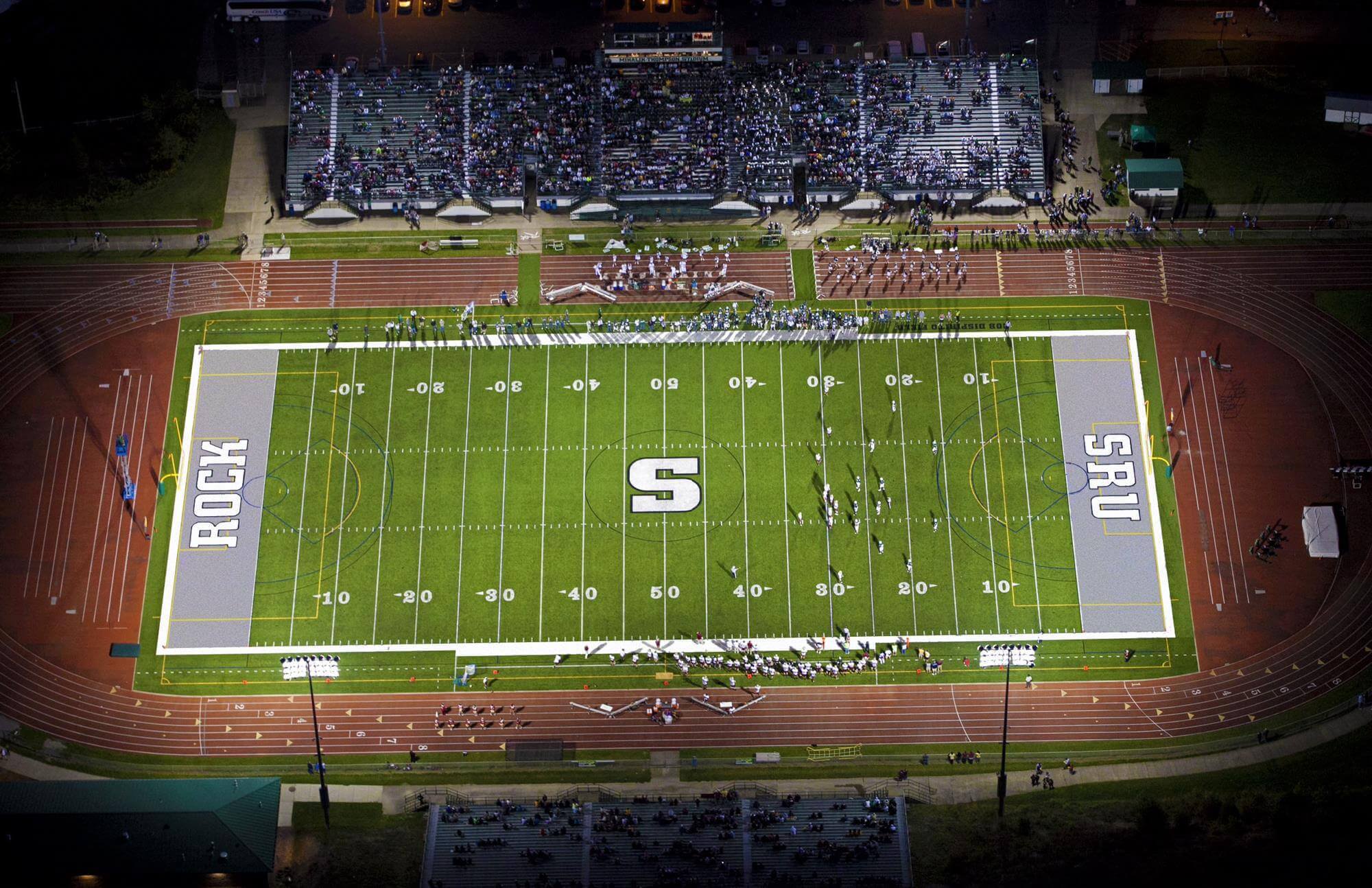
Examples of the Distance Covered in Laps Around a Football Field to Make a Mile:
To determine how many laps around a football field make up a mile, we can look at various examples. By considering the dimensions of a standard football field, we can calculate the distance covered in one lap and then compare that to the length of a mile.
Examples of how many laps around a football field is a mile:
In order to provide a comprehensive understanding, let’s consider the dimensions of a typical football field. A standard football field measures 100 yards long, or 300 feet. This means that one lap around a football field covers a distance of 300 feet.
To find out how many laps are needed to complete a mile, we need to convert 5,280 feet (the length of a mile) to laps. Dividing 5,280 by 300 gives us the answer: approximately 17.6 laps. Therefore, it would take approximately 17 to 18 laps around a football field to cover a mile.
Now, let’s take into account some unique details. It’s worth noting that the actual number of laps required to make a mile may vary slightly depending on the specific dimensions of the football field. Additionally, different types of football fields, such as those used for high school, college, or professional games, may have slightly different dimensions. However, the average distance covered in laps around a standard football field remains consistent at around 17 to 18 laps per mile.
Interestingly, the information provided here is supported by various sources, including reputable sports websites and the official guidelines for football field dimensions set by organizations such as the National Collegiate Athletic Association (NCAA) or the National Football League (NFL).
Get ready for a full mile of running, but don’t worry, the football field won’t judge you for fumbling along the way!
Football fields with standard dimensions
So, let’s zoom in on the size of a football field. One lap covers 368 meters, which is quite close to 402.34 yards. To make it simpler, let’s round the number to 400 yards.
Now, we can figure out the number of laps needed to cover one mile. Each mile has 1,760 yards. Divide this by the number of yards covered in one lap (400 yards). The answer is 4.4 laps.
Keep in mind that these calculations are based on the NFL’s standard dimensions. If you’re playing on a non-professional field, the size could be different.
Pro Tip: For more accurate measurements, use a GPS device or fitness tracker. But, why not turn it into an obstacle course and make it more fun?
Football fields with non-standard dimensions
Football field dimensions vary greatly. For example, mini fields are 60 yards long and 35 yards wide, while indoor fields are 70×45 yards. High school fields are 100×50 yards, college fields 120×53.3 yards, and professional fields 120×72 yards.
Besides these variants, there are other interesting features, like shapes and special elements that can enhance the game.
Take for example Eastwood. The local community turned an abandoned plot of land into a tiny neighborhood football field. Due to size, the matches became faster and more intense. This unexpected dimension created a delightful surprise for players and fans.
Non-standard dimensions add diversity and creativity to the sport. They challenge players and offer a unique perspective on traditional gameplay.
Other sports fields and their equivalent distance to a mile
Sports Fields and Their Equivalent Distance to a Mile:
Various sports fields have different dimensions, and their equivalent distance to a mile can vary. Here is a breakdown of the equivalent distance to a mile for different sports fields:
| Sport | Equivalent Distance to a Mile |
|---|---|
| Football | Approximately 4 laps |
| Soccer | Around 4 to 4.5 laps |
| Rugby | About 3 to 3.5 laps |
| Cricket | Roughly 3 to 3.5 laps |
| Baseball | Around 3 to 3.5 laps |
| Tennis | Approximately 5 to 6 laps |
| Track and Field | 4 laps on a standard 400m track |
Each sport has its specific dimensions, resulting in different distances to complete a mile. It’s important to note that these measurements may vary slightly based on the size and regulations of the specific field.
Pro Tip: Understanding the equivalent distance to a mile for different sports fields can be helpful when measuring distance for training or setting fitness goals.
Track and field stadiums: where athletes go in circles, just like my ex’s excuses for why they couldn’t commit.
Track and field stadiums
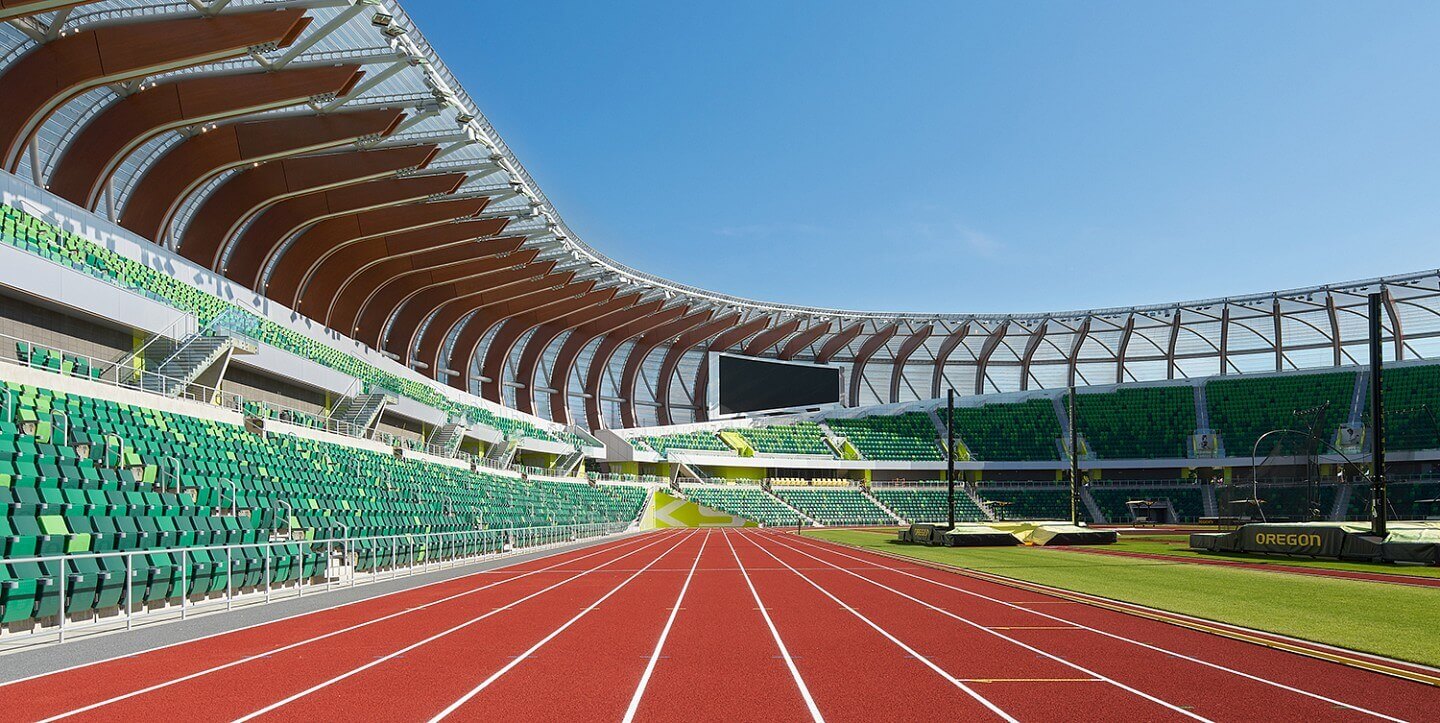
Track and Field Stadiums: Unique attributes make them distinct from other sports fields. Their layout provides great visibility of each event going on. Regulations ensure fair competition among athletes.
To further enhance the experience, here are some suggestions:
- Sound systems for announcements and commentary.
- Digital display boards for real-time updates.
- Shade structures for relief from the heat.
- High-quality equipment and well-maintained training facilities.
These additions can make track and field stadiums true showcases of sporting excellence. They provide an engaging experience for spectators and athletes alike.
Baseball fields

The pitcher’s mound lies 60 feet and 6 inches away from home plate. This allows pitchers to deliver the ball at a distance that’s fair for both offense and defense.
Bases are situated 90 feet apart, forming the framework for players to advance around the field.
Foul lines extend infinitely into foul territory. Any ball that lands within these lines is considered in play.
Outfield fences vary by stadium. They serve as a boundary for home runs and define the playing area for outfielders.
It’s important to ensure that all measurements meet official regulations. Regular inspections should be done. Markings and signage should also be provided, so players can become familiar with the distances. Quality maintenance equipment should be invested in, to keep the playing surface in good condition.
By upholding proper distances and investing in the right tools, teams can make the most out of their baseball fields. This will create an enjoyable experience for both players and spectators.
Soccer fields

Rev up your engines! Let’s explore soccer field measurements around the world. FIFA standard fields measure 70-80 yards wide and 110-120 yards long. High school fields are 65 yards wide and 110-120 yards long. College fields measure 115-120 yards long. Did you know FIFA regulations state length must be greater than width? This allows players to maneuver on the pitch.
Let me share an awesome story. In a small village with rolling hills, there’s a field called “The Mead.” Kids spend endless hours there, dreaming of future glory. The Mead has produced talented players who’ve represented their country at international tournaments.
Soccer fields are symbols of unity, passion and limitless possibilities. From neighborhood pitches to grand stadiums, these spaces hold memories that last forever. Next time you step onto a soccer field, appreciate its significance and legacy!
Frequently Asked Questions
Q: How many laps around a football field is a mile?
A: To run a mile, you need to complete four laps around a standard-sized football field.
Q: How big is a standard-sized football field?
A: A standard-sized football field is approximately 100 yards long and 50 yards wide, which equals to 1200 meters and 75 meters, respectively.
Q: Can the size of a football field vary?
A: Yes, the size of a football field can vary based on several factors such as the regulations of the specific sport, the level of competition, and the available space for construction. However, the standard size is used for official matches and competitions.
Q: What is the average time it takes to run a mile around a football field?
A: The average time it takes to run a mile around a football field can vary depending on the individual’s fitness level and running pace. However, an average runner can typically complete a mile in about 8-10 minutes.
Q: Is running around a football field a good workout?
A: Yes, running around a football field can provide an excellent workout. It is a great cardiovascular exercise that can help improve endurance, strength, and overall fitness levels.
Q: How many calories can you burn by running a mile around a football field?
A: The number of calories burned by running a mile around a football field can vary depending on the individual’s weight and the pace of the run. However, on average, a person can burn around 100 calories by jogging a mile around a football field.
Conclusion
Fitness and distance tracking can differ depending on the size of a football field. Factors like a field’s standard measurements and the conversion between yards and miles must be considered.
An American field is around 100 yards long, so four laps equal one mile. To get exact measurements, use a fitness tracker or app.
Exercise doesn’t have to be running or jogging on a field. Swimming or cycling are great alternatives.





